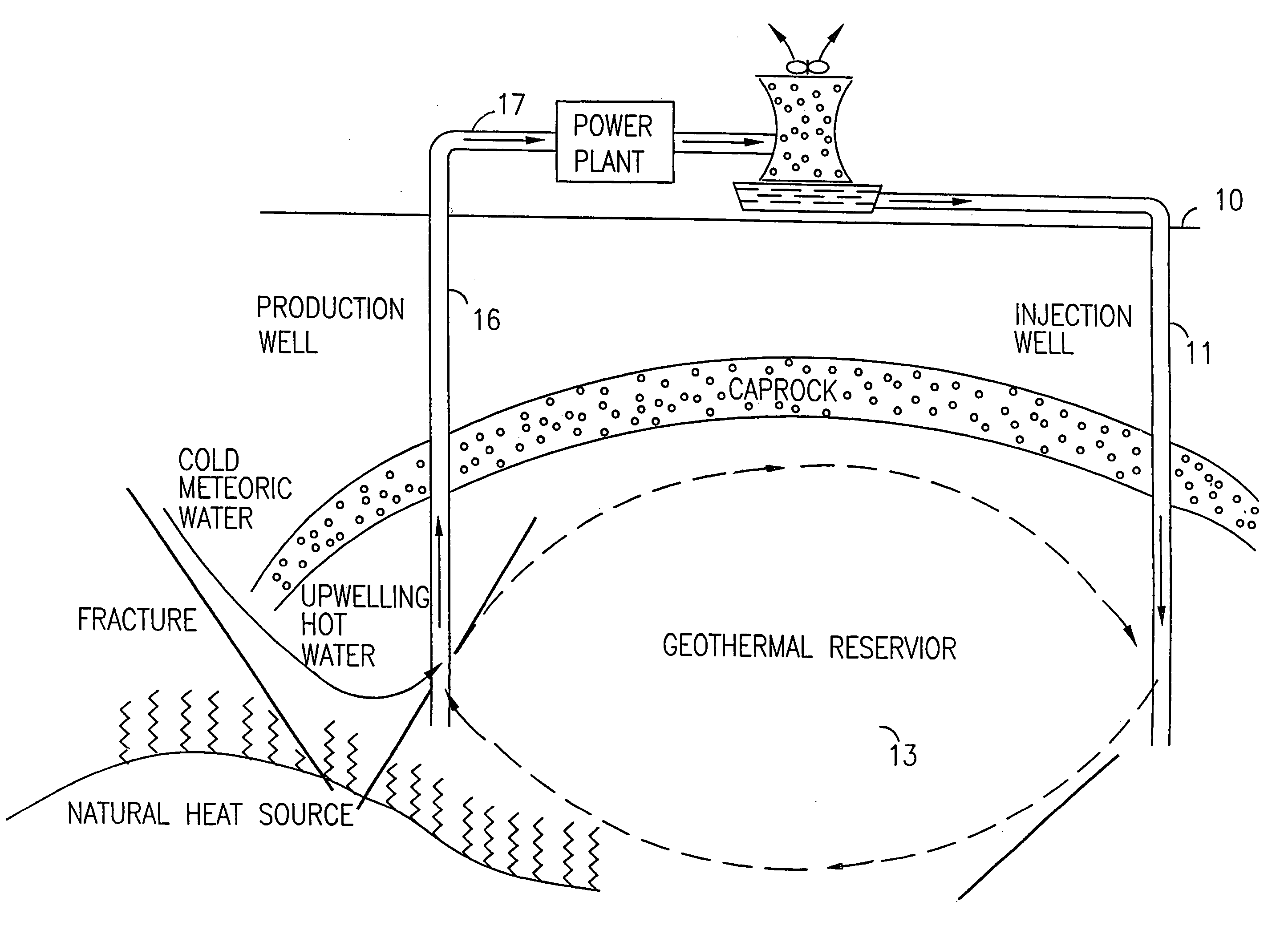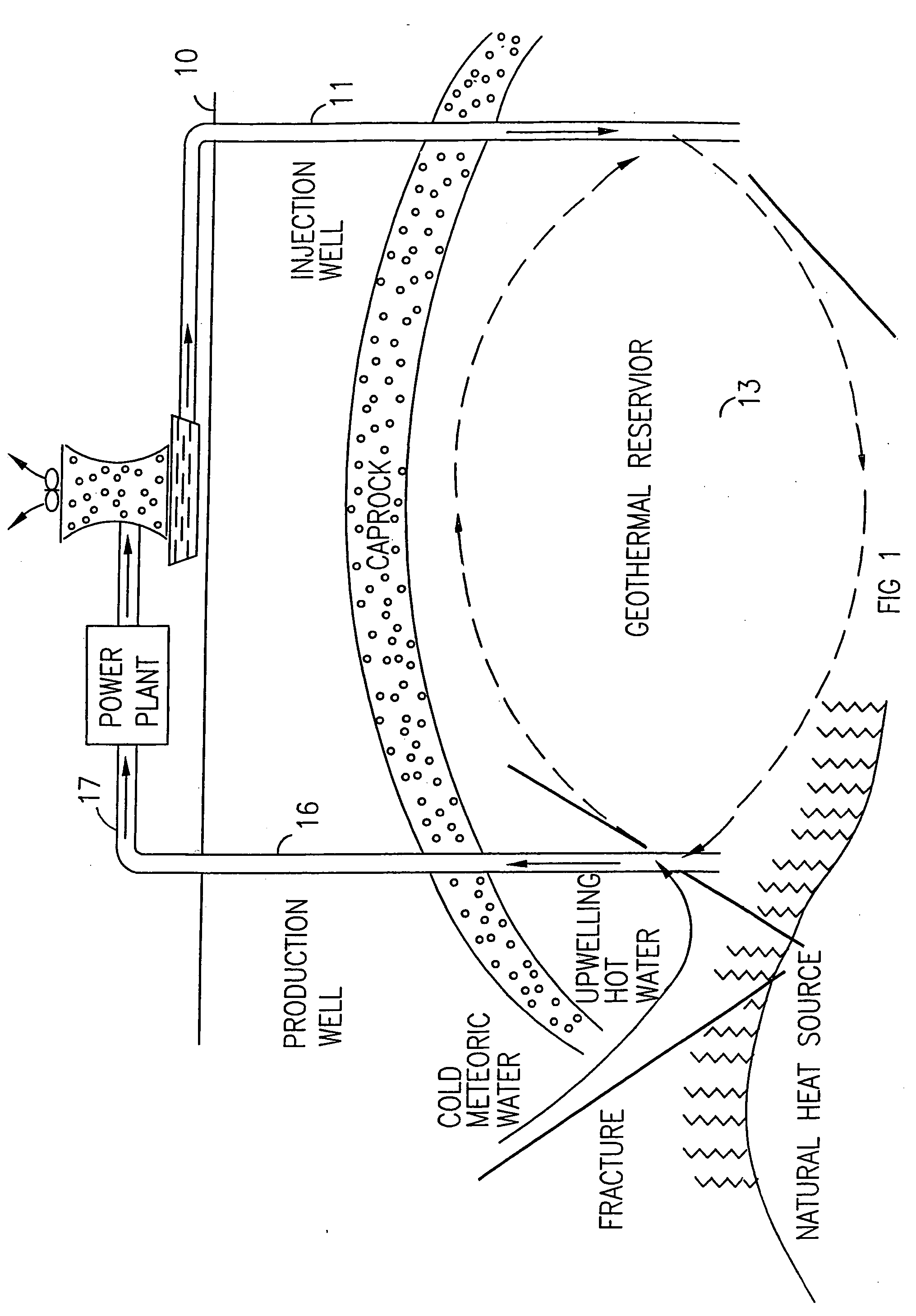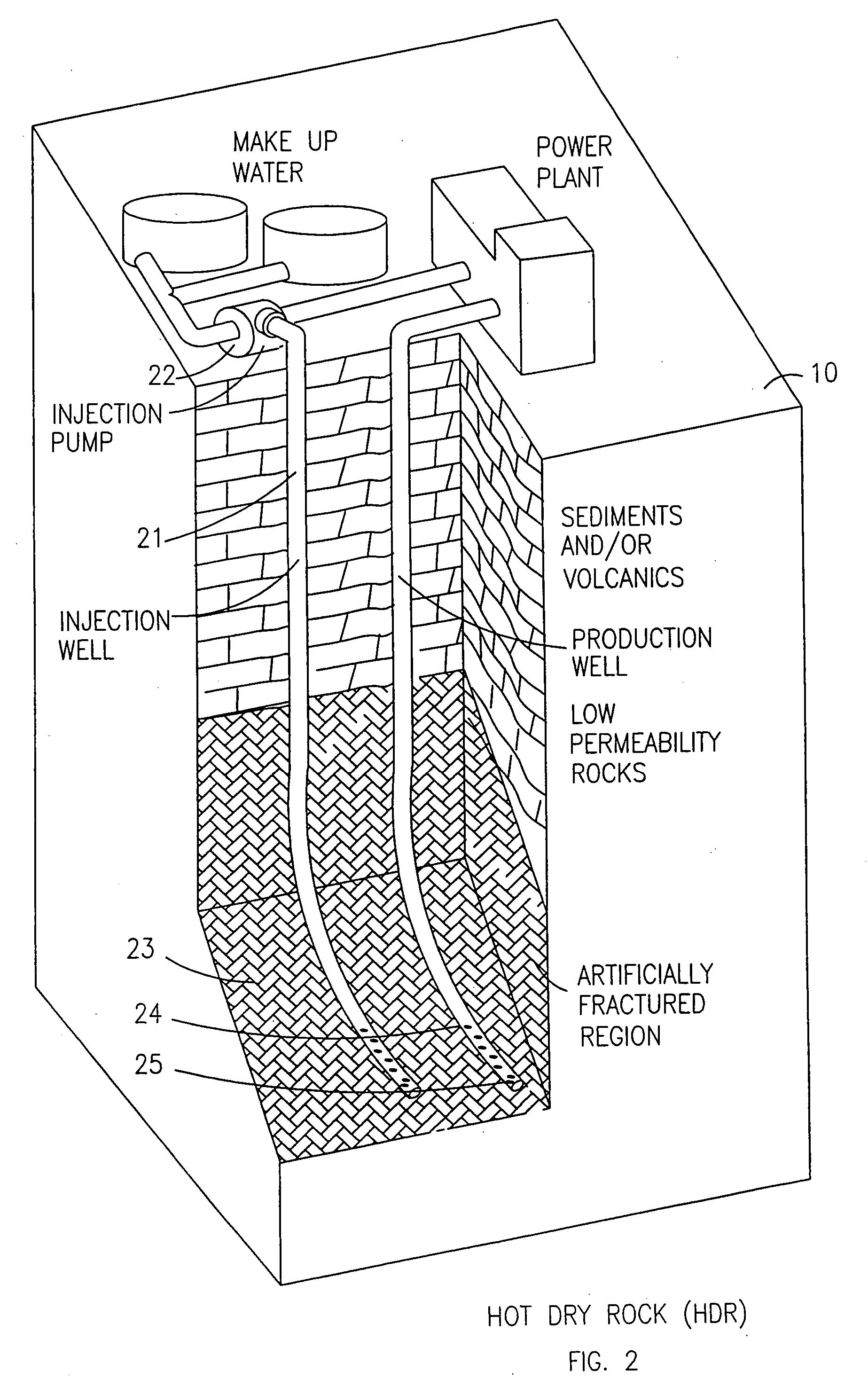Method and apparatus for using geothermal energy for the production of power
a technology of geothermal energy and geothermal fluid, which is applied in the direction of engines, machines/engines, gas turbine plants, etc., can solve the problems of limited geothermal fluid production, difficulty in sustaining fluid circulation at a high enough rate at reasonable pressure, and loss to the surrounding, so as to reduce water loss, reduce heat loss, and reduce density
- Summary
- Abstract
- Description
- Claims
- Application Information
AI Technical Summary
Benefits of technology
Problems solved by technology
Method used
Image
Examples
Embodiment Construction
[0046] In the embodiment of FIG. 8, considered at present the best mode for carrying out the present invention, numeral 30 indicates the ground. Numeral 31 indicates a geological layer that is suitable for the drilling of horizontal wells. Numeral 32 indicates a first (injection) horizontal, geothermal well connected to an injection connection means 33. Numeral 34 indicates a second (production) horizontal, geothermal well connected to production connection means 35. The said two horizontal wells are located in a suitable geological layer 31, first (injection) horizontal, geothermal well 32 being located at a deeper level than shallower, second (production) horizontal geothermal well 34. The suitability of geological layer 31 for such operations and the relative position of said horizontal, geothermal wells are determined by carrying out geophysical surveys and drilling e.g. narrow “slim holes” in said geological layer. Actual core samples or geological cuttings produced from said g...
PUM
 Login to View More
Login to View More Abstract
Description
Claims
Application Information
 Login to View More
Login to View More - R&D
- Intellectual Property
- Life Sciences
- Materials
- Tech Scout
- Unparalleled Data Quality
- Higher Quality Content
- 60% Fewer Hallucinations
Browse by: Latest US Patents, China's latest patents, Technical Efficacy Thesaurus, Application Domain, Technology Topic, Popular Technical Reports.
© 2025 PatSnap. All rights reserved.Legal|Privacy policy|Modern Slavery Act Transparency Statement|Sitemap|About US| Contact US: help@patsnap.com



